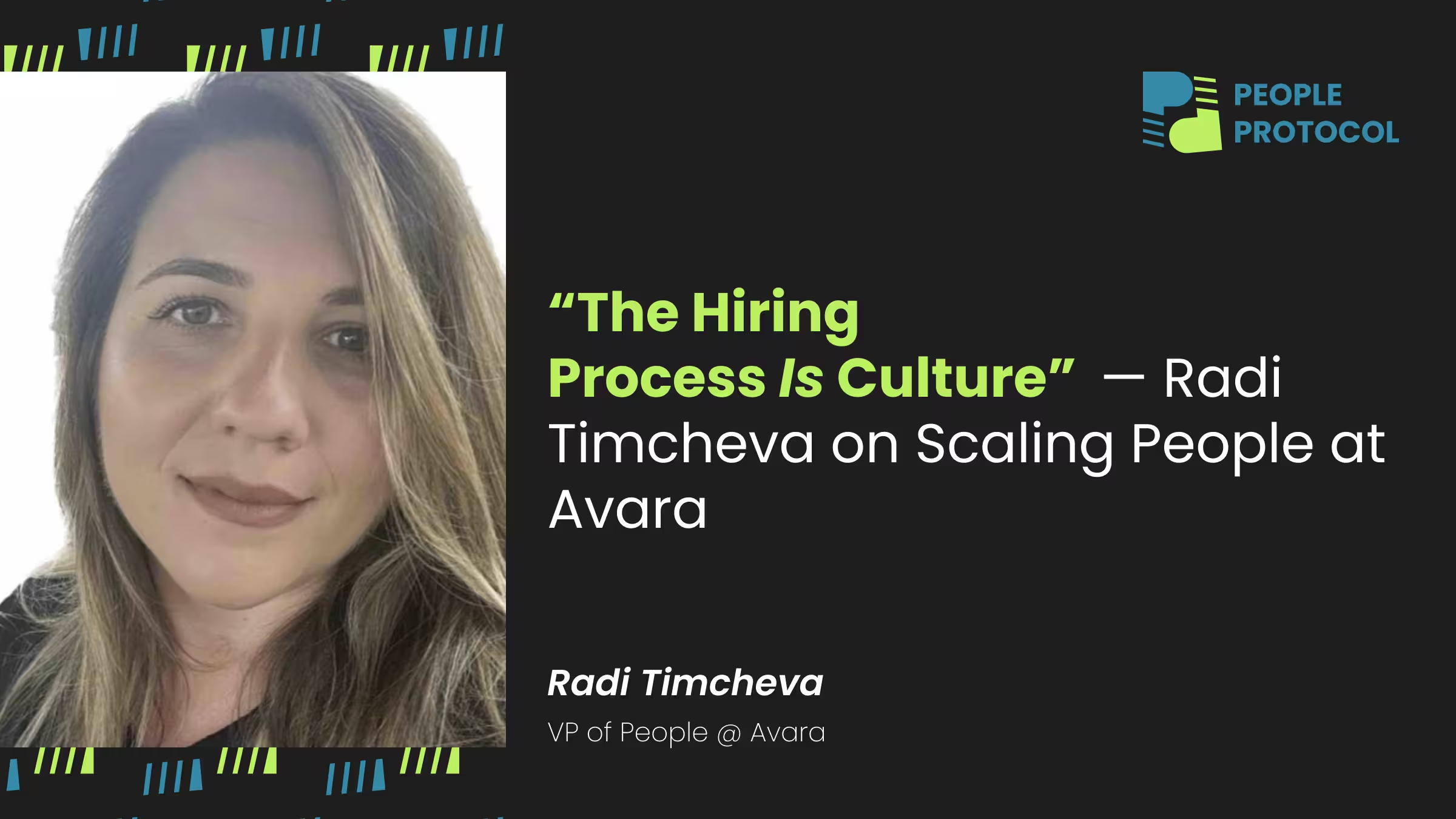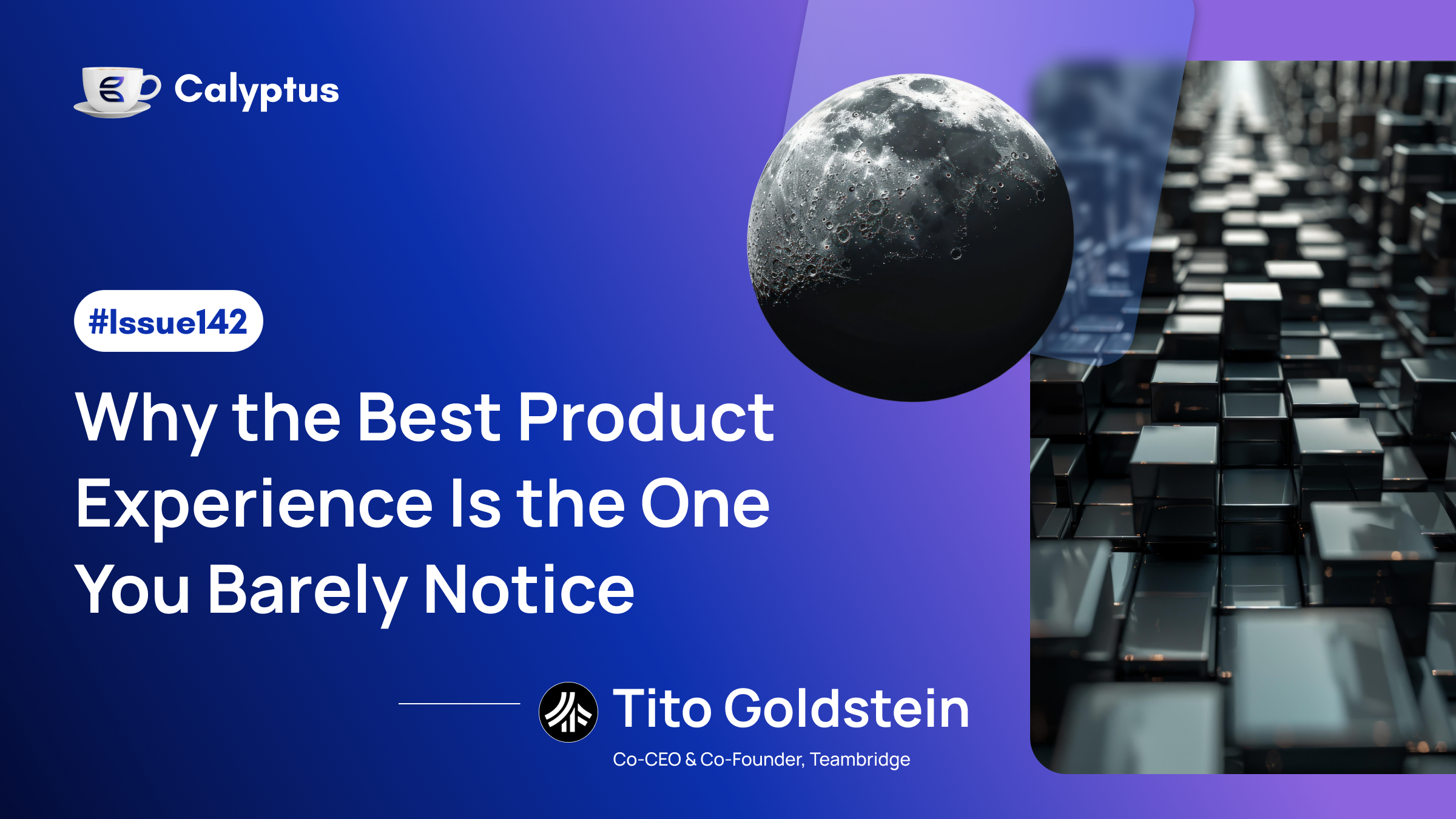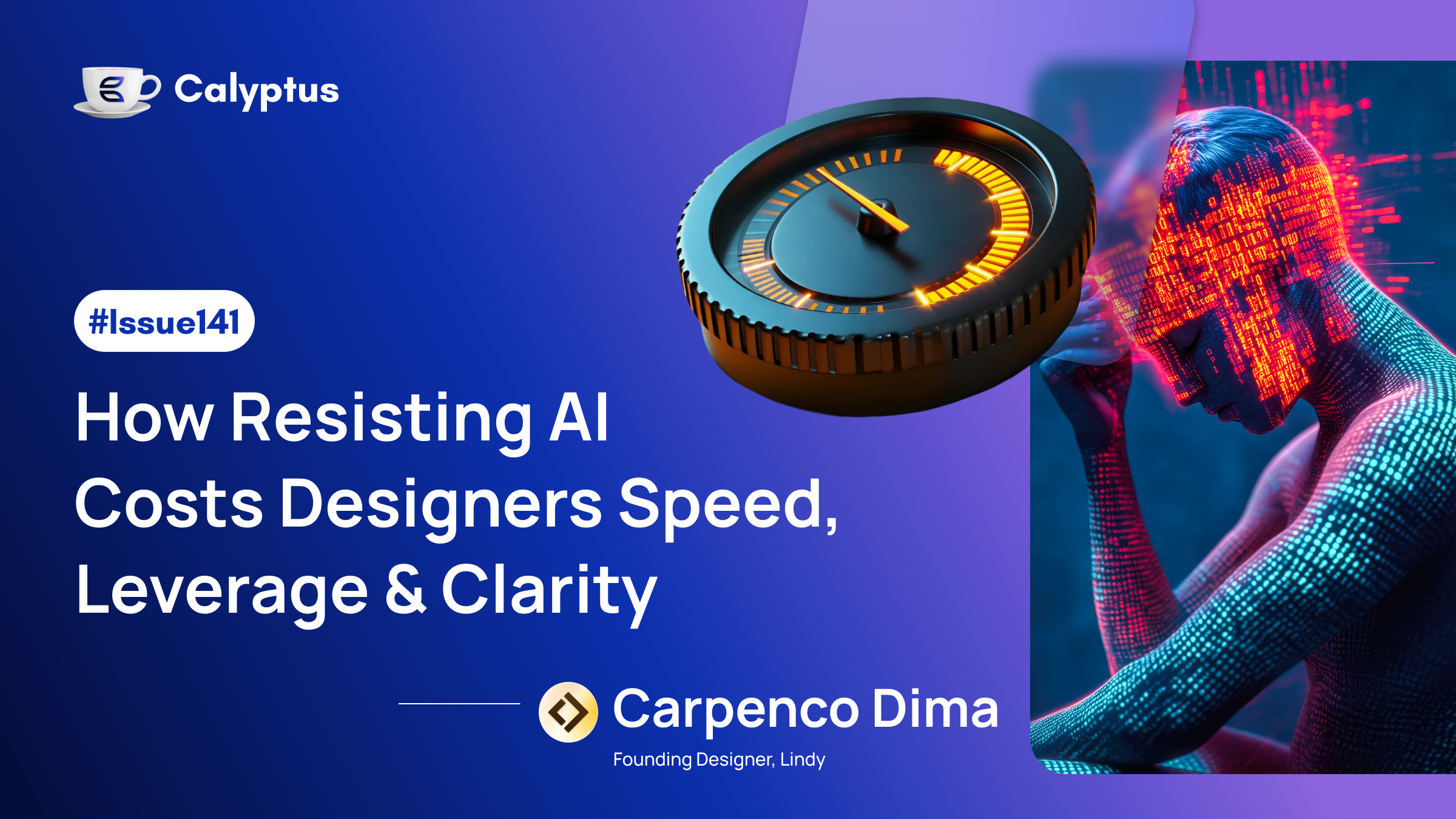Avara has grown from a category-defining DeFi protocol (Aave) into a broader Web3 ecosystem spanning SocialFi (Lens), stablecoin rails (GHO), and consumer products (Family). VP of People Radi Timcheva has evolved the People function in lockstep - broadening talent profiles, turning the hiring process into Avara’s first cultural expression, instituting DRIs and mission briefs for remote alignment, and using AI to remove operational friction while keeping the craft human. In this People Protocol, Radi shares how Avara maintains a high bar without losing speed, supports lateral mobility (and acquisitions) as a growth lever, and builds systems that scale standards across diverse products and communities.
You’ve seen Avara evolve from a DeFi protocol to a broader Web3 ecosystem. How has your People strategy adapted to support that expansion?
When we started, our hiring practice focused on a specific talent profile: deeply crypto-native builders with strong technical and financial fluency - skills that remain at the core of what we do today. As we’ve evolved, we’ve expanded our focus, bringing in new skill sets to complement our technical depth - from product designers to ecosystem growth leads, compliance experts, and people who can bridge Web3 with broader consumer products.
We also deliberately developed new skills inside the People function itself, so we can match the speed, ambition, and diversity of the teams we support. It’s an ongoing effort: as the company evolves and expands, so does the support we provide, so that we stay aligned on what success looks like.
To keep up the pace of hiring without diluting our high standards, we have made two fundamental shifts. First, we’ve strengthened our talent assessment process - focusing not only on where a candidate has been, but also on who they are today, and how they align with where we’re headed. We designed clear, role-specific tasks that are intellectually stimulating and show us how someone really works in the context that matters most: ours.
Second, we’ve turned the hiring process itself into our first cultural expression. Every step - from our first contact to receiving final feedback - reflects the clarity, craft, and care we expect day-to-day from ourselves.
What are the most unique hiring challenges when scaling projects like Aave, Lens, and GHO - each with distinct communities and talent needs?
Hiring across DeFi and SocialFi presents a unique set of challenges, as each has its own DNA - and what makes someone successful in one domain may not translate to the other. To navigate this, we define success up-front for each role, stress-test our assumptions through diverse input, and create feedback loops where each new hire helps sharpen what ‘great’ looks like for the next.
At Avara, we emphasise security as a core principle - it’s central to how we operate and build, and it directly aligns with the trust users place in our products. Many candidates value anonymity and operate pseudonymously, which can clash with our business requirements for transparency, security, and compliance. We have developed robust practices to verify identity, validate contributions, and assess intent.
We also frequently meet brilliant builders - often students or self-taught - who’ve shipped impressive projects but have never worked in a structured environment. While their technical skills are outstanding, they may lack familiarity with planning, stakeholder dynamics, and organisational scale. Our role is to support their transition without dulling their edge - helping them integrate into a high-performance team, while keeping the spirit of Web3 alive.
How do you approach internal mobility and cross-functional growth across Avara’s portfolio of products?
In a portfolio model like ours, internal mobility isn’t a nice-to-have - it’s a core part of how we stay fresh and resilient. Some of our greatest accomplishments have come from people moving laterally, bringing new insight from things they have done or learned in other parts of the company. These moves bring a new perspective.
Another way we strengthen our teams is through strategic acquisitions. Sometimes the best way to grow isn’t to hire individuals one-by-one, but to bring in a team that already works well together and builds in ways that align with our mission. But an acquisition is only the beginning - fully integrating these teams is where the real work begins. We put a lot of care into helping new teams feel supported and connected, so they can help accelerate us, rather than feeling isolated.
A great example is our acquisition of Family, the Ethereum mobile consumer wallet. The Family team brought a distinct design sensibility with them – an obsession with thoughtful, user-focused details that as a result, have sharpened our entire approach to product development. Their expertise didn’t replace what we had; it levelled it up and gave our teams new creative partners to learn from. It also reinforced our commitment to and reputation for developing high-quality, high-design innovative products that deliver a great user experience.
In combination with providing clear growth pathways for individuals, bringing in new teams and enabling cross-functional mobility and growth, enable us to stay ahead without losing our special culture.
With a global, remote-first team, what are the key rituals or systems you’ve built to maintain high alignment and performance?
When you’re remote-first, you can’t rely on casual alignment - you have to design for it. We do this by grounding every project and role in a clear mission brief so everyone knows what success looks like, who’s responsible, and how progress is measured and tracked. We do this by assigning DRIs (Directly Responsible Individuals) to each initiative to ensure there’s clear ownership. We saw this work first within our Product teams and subsequently, have expanded it across the company. By assigning a single DRI, we have created a single point of accountability, helping us move faster and maintain alignment without ambiguity - even across time zones and teams.
Equally important is how we close the loop between daily work and the bigger picture. Our performance review cycle has matured over the years. We track more than just progress. Performance reviews actively reinforce how we want people to contribute their skills and what success looks like. We run two full cycles a year, each starting with an all-company session that looks back at the previous six months and communicates the goals for the company. The reviews themselves go beyond deliverables: they’re structured to capture outcomes, development areas, and encourage entrepreneurial problem-solving that connects back to our operating principles in a real way.
Combined, these measures ensure that even in a fast-moving, fully-distributed environment, people stay connected to our purpose, they’re accountable, and equipped with the support to grow.
You’ve led People functions across hypergrowth fintech and frontier tech. What leadership lessons have stuck with you from that journey?
One lesson that’s stayed with me is that if you rush hiring, you’ll pay for it later - in trust, culture, or team performance. Moving quickly is necessary, but you can’t cut corners.
Another is that rigorous hiring standards build their own momentum. When people know they’ve genuinely earned their place through a fair, intentional process, they naturally protect that standard for everyone who comes after them. Over time, high standards stop being top-down rules - they become how people hold each other accountable.
A high bar encourages top talent. Great people want to work alongside others who challenge and inspire them. That promise begins with the very first interactions.
AI is reshaping the People function. How are you exploring or using AI to drive better hiring, onboarding, or talent decisions?
Many of the tools we rely on now have AI features built in by default - and that’s deliberate. They help us minimise time-consuming, repetitive tasks like scheduling or reviewing job descriptions without hidden bias - freeing our team to spend more time on personal interactions and connections with candidates as well as on matters that require judgement. We are also excited about using AI for learning and development. We’re rolling out our training provider’s AI capabilities to build more tailored learning paths, so development plans are tailored to individual skills, roles, and ambitions.
We haven’t yet found a tool that fully meets our needs for sourcing, but we’re continuing to explore what’s out there.
For us, AI is here to remove friction and sharpen operations so our people can invest their energy where it counts the most: trust, context, and craft. The craft stays human, but the busywork is offloaded as much as possible to AI.




